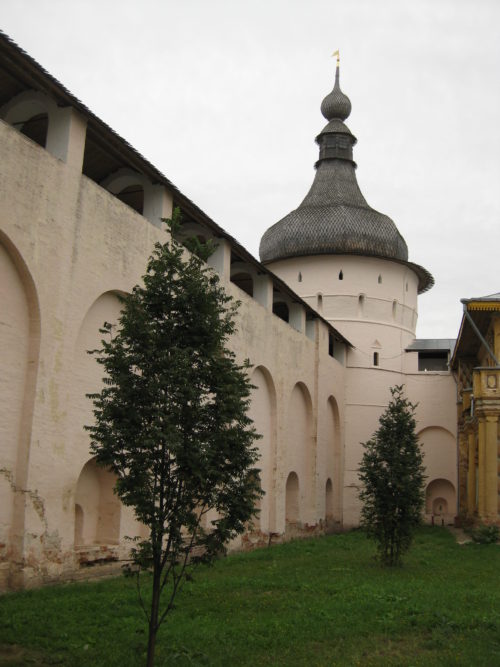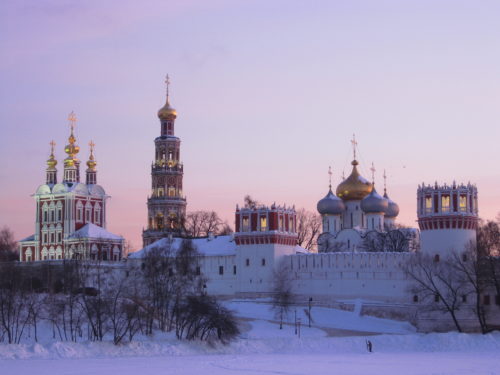A Gastronomic Map of Italy’s Best Foods
Italian cuisine is extraordinarily regional. While the Neapolitans may be eating pizza, the Romans will be eating pasta carbonara, the Milanese risotto, and the Florentines bean soup… it goes on and on! To have an actual taste of Italy, join one of our top-rated food tours in Rome or Florence. Below you will 16 of Italy’s Best Foods.
We’ve teamed up with illustrator Edward McGowan to help you better understand the large range of “Italian” food and where each dish originates from via our foodie map of Italy…buon appetito!
16 Italian Foods and Drinks You Have To Try:
1. Risotto
Milan, Lombardy
This delightful and creamy rice dish hails from the north of Italy. It’s prepared by toasting rice with butter and onion, adding stock and cooking until soft. Risotto can be prepared with many different ingredients including seafood, porcini mushrooms and sausage. The traditional Risotto alla Milanese which is made with meat stock, bone marrow, cheese and a large dose of saffron.
Where to eat Risotto: In Milan, go to Trattoria Masuelli San Marco where they have been using the traditional Risotto alla Milanese recipe since they opened in 1921.
2. Ragù alla Bolognese
Bologna, Emilia Romagna
To some people’s surprise, Spaghetti Bolognese technically does not exist. The closest thing Italians have to a ‘spag bol’ is Ragù alla Bolognese, a meat sauce in the Bolognese style, prepared with carrots, onion, celery, beef and pork in a tomato sauce. It’s also never served with spaghetti, only tagliatelle!
Where to eat Ragù alla Bolognese: It is hard to find a bad ragù in Bologna but try Trattoria Annamaria. Here, the sauce is cooked for 8 hours for the most authentic flavor.
3. Carbonara
Rome, Lazio
Traditional Roman Carbonara is made with 4 basic ingredients: guanciale (cured pork jowl), eggs, pecorino romano cheese and black pepper. No cream! The mixture of eggs and cheese provide the creaminess.
Where to eat Carbonara: When in Rome head to Da Enzo al 29 for some of the best pasta in town, or take our Taste of Testaccio tour to try one of the best-rated Carbonaras in town at Flavio al Velavevodetto.
4. Pizza
Naples, Campania
Pizzas true home is Naples, and no trip to the city would be complete without eating an authentic ‘pizza napoletana’. With a thicker crust than its Roman counterpart, the toppings are simple. Many Italians prefer a patriotic Margherita with tomatoes, mozzarella and basil-the colors of the Italian flag.
Where to eat pizza: For a true Napolitan pizza experience it has to be Da Michele which has been in business since 1870. Otherwise take a trip to Brandi where the Margherita pizza was invented in 1889 in honor of Queen Margherita of Savoy.
5. Cannoli
Sicily
Nothing beats a real Sicilian cannoli. These pastries are piped through with a sweetened ricotta cheese, usually mixed with chocolate chips. They are then decorated with candied fruits, chocolate or pistachio.
Where to eat cannoli: Any good pastry shop in Sicily will have great cannoli, but the best ones will be anywhere that fills the tubes to order, as this will guarantee a crisp outer shell and fresh filling.
6. Seadas
Sardinia
These Sardinian pastries are sweet and savory and can be eaten as either an appetizer or a dessert. The big ‘ravioli’ of rustic semolina pastry are filled with lemon-infused pecorino cheese then deep-fried and drizzled with honey.
Where to eat seadas: If you are in Sardinia, seadas will not be hard to find. However, be sure that they are freshly fried so they are still warm and the cheese is soft and melted.
7. Prosciutto San Daniele
Friuli Venezia Giulia
The area of San Daniele in the north-eastern region of Fruili Venezia Giulia makes some of the most delicious prosciutto in all of Italy. The area’s particular microclimate and the quality of the meat combine during the curing process to produce a soft, sweet ham that you can’t find anywhere else.
Where to eat Prosciutto San Daniele: Prosciutto San Daniele can be found in any good ‘alimentari’ or delicatessen in Italy. Try Rome’s acclaimed Volpetti gourmet food store on our Taste of Testaccio tour.
8. Pesto Genovese
Genoa, Liguria
Traditional Genoan pesto is a tribute to two of the wonderful fresh ingredients of the Liguria region: small leaves of fresh, local basil and excellent, aromatic, Ligurian olive oil. Add garlic, parmesan, pecorino, salt, pine nuts and a hefty dose of patience to grind it all together in a pestle and mortar. The authentic Genovese way to serve pesto is with pasta and the addition of potatoes and green beans.
Where to eat Pesto Genovese: In Genoa you can’t go wrong at Il Genovese where the pesto is freshly made every day. When in Rome join our Twilight Trastevere or Trastevere for Foodies tours to try homemade pesto with fresh pasta.
9. Parmigiano Reggiano
Emilia Romagna
The King of all Italian cheeses, the production of real, authentic Parmigiano Reggiano is restricted to parts of the Emilia Romagna region and a small section of Lombardy. Made with cow’s milk and aged for an average of 1-4 years, Parmigiano is often used in Italian cooking all over the world. The production of just one wheel of Parmigiano requires a whopping 600 liters (158 gallons) of milk!
Where to eat Parmigiano Reggiano: One can easily find excellent Parmigiano all over Italy!
10. Spritz
Venice
The Italian’s favorite aperitivo, the spritz is made with sparkling Prosecco wine and a bit of liqueur, such as bitter Campari or the orange-flavoured Aperol served with ice and a slice of orange. The spritz is one of the most common pre-dinner drinks all over Italy.
Where to drink Spritz: Any bar in Italy will make a spritz if asked. Look out for Happy Hour/Aperitivo spots where you take full advantage of the free buffet when you order a drink.
11. Chianti
Tuscany
Tuscan wines are popular all over the world, but the most well known is definitely Chianti. Produced in the Chianti region between Florence and Siena, there are now many restrictions in place to ensure the quality of the real Chianti from the areas where it is produced to the combination of the grape varieties used. To ensure you are drinking an authentic Chianti, look for the black rooster symbol on the label.
Where to drink Chianti: Join our Other Side of Florence food tour or our Italian Food & Wine Pairing Class.
12. Limoncello
Capri / Amalfi Coast
The ginormous lemons which grow in the Amalfi Coast form the base of one of Italy’s most popular digestivi or after-dinner drinks, Limoncello. The bright yellow drink is made by steeping the lemon zests in alcohol until the oil is released and then mixing with a sugar syrup.
Where to drink Limoncello: After dinner, many Italians order a caffè (espresso) and a chilled glass of Limoncello to digest. Give it a try!
13. White Truffle of Alba
Piedmont
Truffles are a member of the mushroom family and grow underground, in the wild. Due to the very specific conditions required for truffles to grow, they can only be found in specific areas at certain times. Truffles are one of the most expensive ingredients in the world. The most-prized truffles in Italy are the white truffles of Alba, in the Piedmont region in the north of the country which can sell for thousands and thousands of Euros.
Where to eat white truffles: Try the town of Alba during October or November when the White Truffle Festival takes place.
14. Extra Virgin Olive Oil
Puglia
The biggest producer of olive oil in Italy is Puglia, the ‘heel’ of Italy, which boasts a spectacular climate and the best land for olive trees. There are different grades of olive oil, all of which are dfferent; from the delicate, golden oils ideal to serve on uncooked dishes, to the green, fruity oils with a dash of spiciness, ideal for grilling and roasting.
Where to buy olive oil: Any good gourmet food store in Italy will have a selection of oils from different regions. Watch out for cheap ‘fake’ oils. Good olive oil can be expensive but it’s worth it!
15. Red Chili Peppers
Calabria
Many Italians don’t prefer very spicy foods but for the exception, take a trip to Calabria where the red chilli pepper (peperoncino) is best. Some of the most common ways to use peperoncino are either with pasta in a zingy penne all’arrabbiata (literally ‘angry’ pasta) or in the delightful Calabrese ‘nduja which is a spicy, spreadable salami made with pork and lots and lots of chilli.
Where to eat red chilli peppers: Spicy foods made with chilli are much more prevalent in the southern regions of Calabria and Sicily. Order pasta all’arrabiata or look out for ‘nduja or salame piccante (spicy salami) in any delicatessen.
16. Gelato
Sicily
Sicily has definitely played a major role in Gelatos history, even though the exact origins are unclear. Although the wide commercialization of gelato has caused many gelaterie to serve a ‘fake’ gelato made with an industrial powdered mix, nothing can beat the real thing.
Where to eat gelato: Book one of our food tours in either Rome or Florence to find out how to tell the difference between ‘real’ gelato and ‘fake’ gelato!
For more travel and foodie tips for Italy, read the following travel guides with our best restaurant recommendations and things to see and do:
Kate Zagorski, Eating Italy Tours | July 21, 2016
As a Rome-resident for the past 13 years, Kate has developed a love of all aspects of Italian cuisine, lifestyle and culture. Aside from leading food tours for Eating Italy and blogging about her adopted country, Kate can usually be found eating, cooking and sipping gin-based cocktails.





























